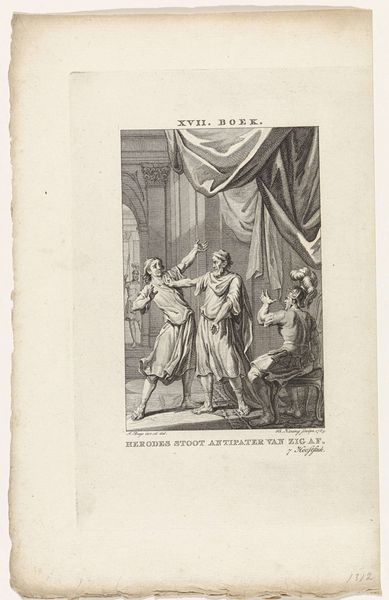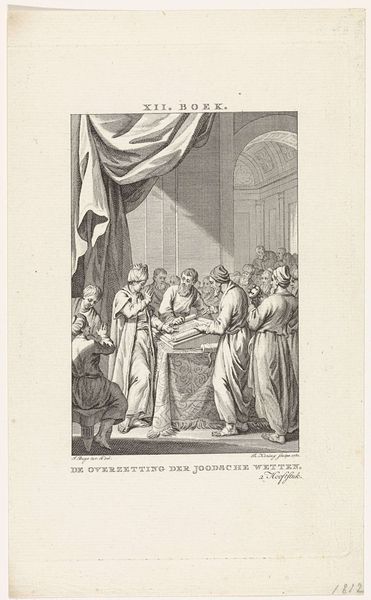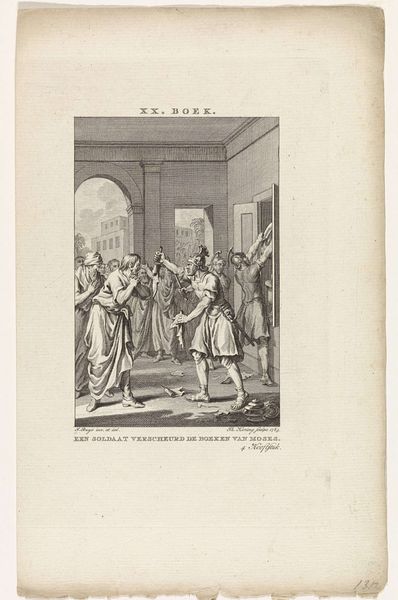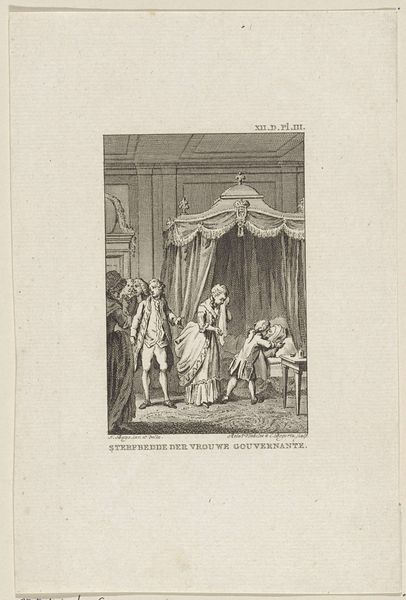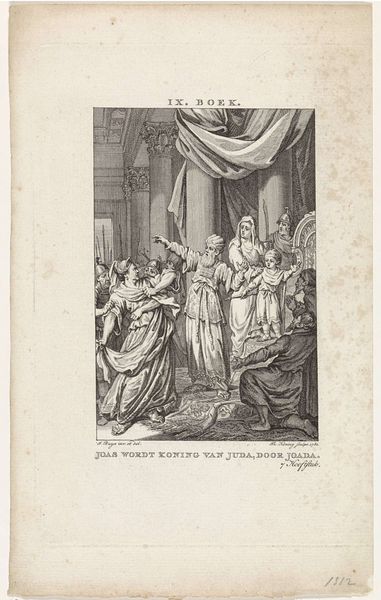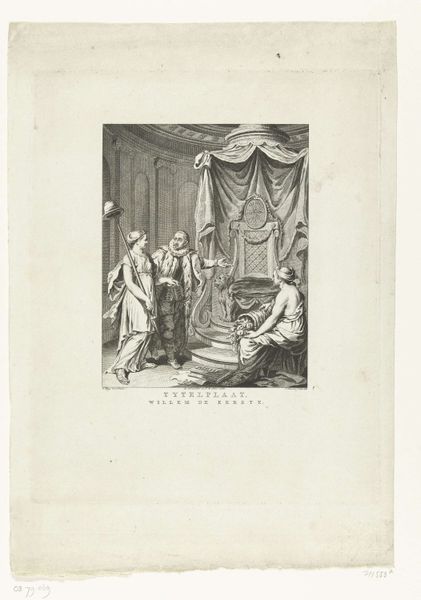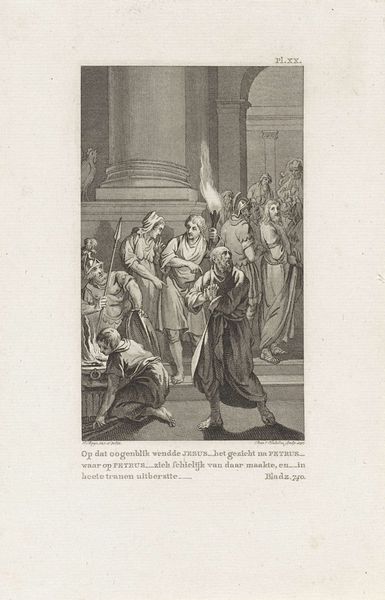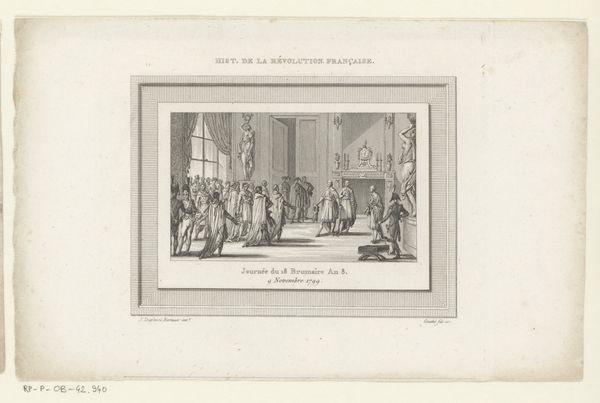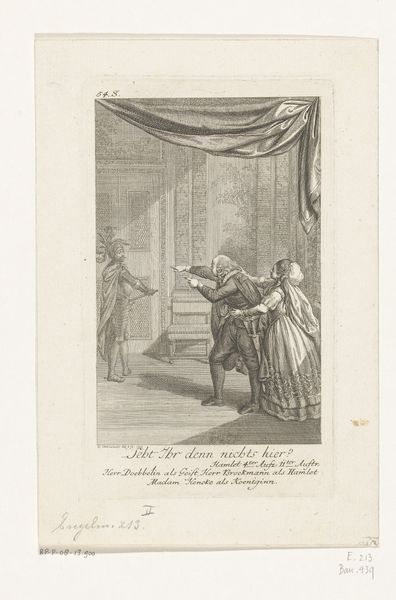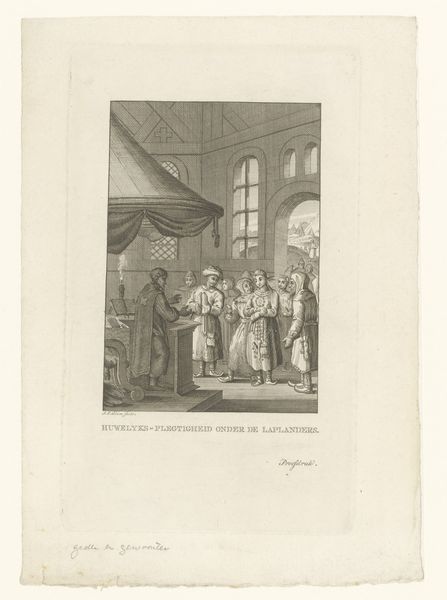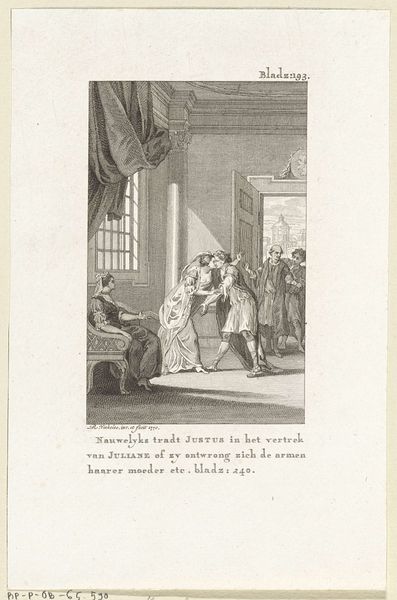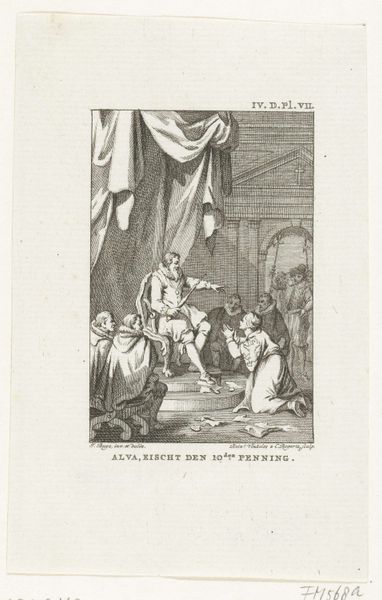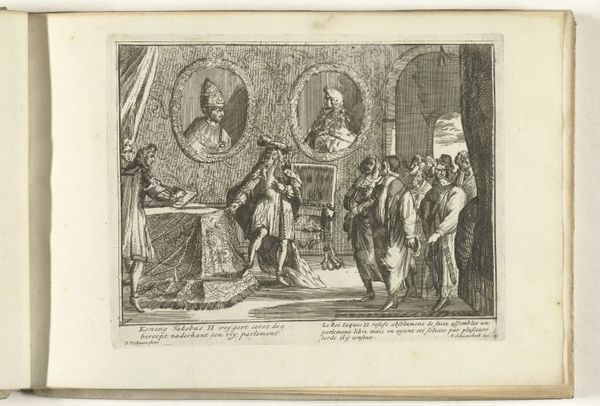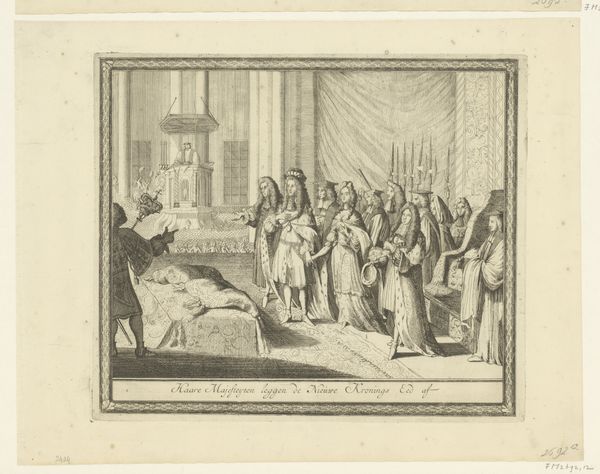
drawing, print, etching, engraving
#
drawing
#
neoclacissism
#
narrative-art
# print
#
etching
#
old engraving style
#
figuration
#
form
#
line
#
history-painting
#
academic-art
#
engraving
Dimensions: height 234 mm, width 148 mm
Copyright: Rijks Museum: Open Domain
This print, titled "Herodes voor het gerecht," was made by Theodoor Koning in the late 18th or early 19th century. It is an etching, a process by which lines are incised into a metal plate with acid, then inked and printed. Consider the labor involved: the preparation of the plate, the careful drawing, the biting of the acid, and finally, the printing itself. The fine lines create intricate details, from the folds of Herod's robe to the architectural elements of the scene. The stark contrast between light and shadow, achieved through the density of lines, adds a dramatic quality. The choice of etching as a medium also speaks to a particular moment in the history of art and reproduction, where printed images were becoming increasingly accessible, contributing to the dissemination of knowledge and ideas. Understanding the labor and historical context of such a print helps us appreciate the work not just as an image, but as a material object embedded in a web of social and economic relations.
Comments
No comments
Be the first to comment and join the conversation on the ultimate creative platform.
